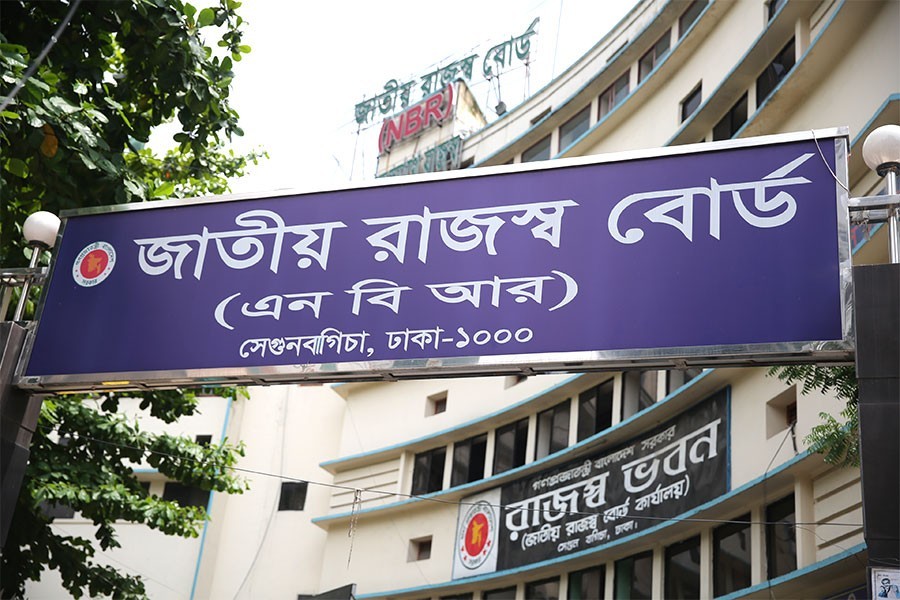It is, no doubt, surprising that the National Board of Revenue (NBR) at times has to succumb to pressure from influential quarters in setting up land customs stations (LCSs) in the border belt. A couple of reports in the print media, lately, have clearly mentioned that there are a good number of LCSs which were set up mainly on considerations other than compliance of NBR's criterion and priorities.
For obvious reasons, these LCSs though opened for cross-border movement of goods remain inactive. While there is very little in terms of infrastructure and manpower, there is virtually no prospect of any sizeable movement of traded goods through these LCSs. Besides, there are reportedly a large majority of the LCSs that are suffering from required infrastructure, although some of these have the potential for facilitating trade with the neighbouring countries, predominantly India.
Nearly 80 per cent of the country's LCSs are presently sitting idle in the absence of export-import operations. An FE report quoting NBR sources says that the number of Land Customs Stations (LCS) is 185, but only 32 of them have regular export-import activity. Permission for opening most of these stations was given because of persuasion by influential quarters and many of those are used only once or twice a year. The LCSs were opened without carrying out feasibility study on their utility in cross-border trade. The NBR had taken steps to close down the inactive customs stations but the move has apparently failed because of the influence of the pressure groups.
Land customs stations or land ports are crucial for Bangladesh's trade with its neighbours. Being landlocked from all but the southeast side, Bangladesh's bilateral trade is heavily dependent on land ports with its immediate neighbour, India. Except bulk cargo, a good number of traded products, especially perishable ones, are better suited to over-land transportation, because of cost-effectiveness and lead time advantage.
The situation has indeed improved from what it was half a decade ago, but absence of long-term measures in terms of infrastructure development has resulted in only temporary improvement which could not withstand the increased and diverse nature of facilitating requirements.
The number one land port at Benapole caters to around 80 per cent of the total overland movement of goods. Given the importance of Benapole, it is being fed with improvement from time to time, although it remains to be said that the overall infrastructure needs a lot to be done. As for the remaining functional LCSs, save only a few, there is very little in place to facilitate movement of traded cargo.
It has been gathered that the NBR is contemplating on reducing the number of non-functional and inactive LCSs and improving the facilities in some of the active ones. Needless to say, the process is taking too long.
The Cabinet Division of the government, reportedly, recommended way back in 2013 that the NBR close down all the inactive LC stations and not set up a new one within 50 kilometres of the existing ones. Understandably, the NBR has its own homework on how to go about. All it now requires is quick implementation-- not just in closing the inactive LCSs but revitalising the active and prospective ones with all required facilities.
While closing down the inactive and unnecessary land ports is a matter that requires immediate attention, adding more facilities to the functional ones calls for quick actions. Keeping the non-functional ones with no trading operation costs the government money and human resource, and doing away with those would make the NBR well disposed of towards concentrating more on the functional land ports.
As for the functional land ports, there is a common perception that not all of them are utilised up to their potential. There were repeated reports in the newspapers pointing out lack of adequate logistic and infrastructure-related facilities in a number of those ports such as the Sutarkanndi and Burimari LCSs, to name only a couple. Proper facilitation, including those for movement of vehicles carrying import and export cargo could generate more trading activities in these and a number of other LCSs.
Strengthening the operational LCSs in Bangladesh as well as in India figures prominently in the bilateral Joint Customs Group meetings held once a year. But the issues on both sides keep lingering on, unfortunately at the expense of trade. As it now appears from reports on the large number of inactive LCSs-- opened on absolutely unjustifiable considerations of local political influence only, it is highly likely that the authorities are not up to the task being over-burdened with these LCSs that have no role to play in overland trading.
Given the situation, it is best known to the authorities concerned how soon they are going to mend the wrongs in as important an area as this where none but they should have the final say. And no less important is the need for identifying the jobs to be undertaken in the functional LCSs to render them more trade-friendly-- as part of a short and medium-term plan.


